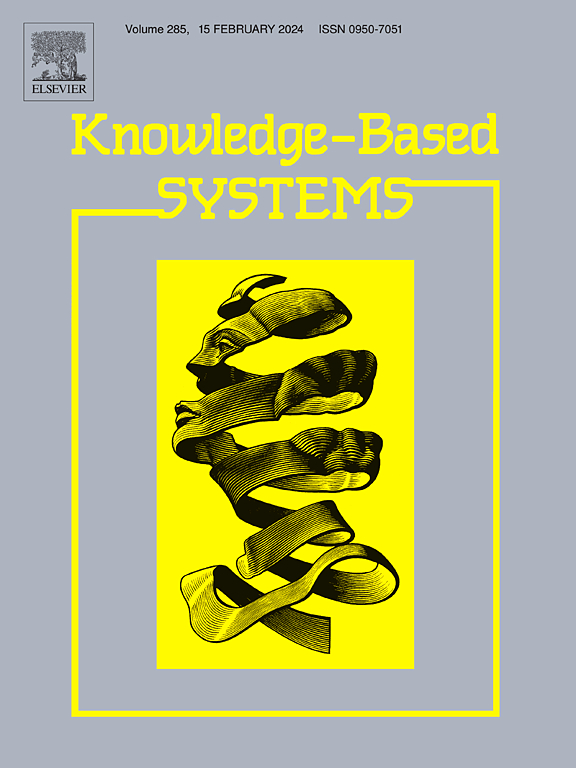DeSGOA: double exponential smoothing gazelle optimization algorithm-based deep learning model for blind source separation
IF 7.2
1区 计算机科学
Q1 COMPUTER SCIENCE, ARTIFICIAL INTELLIGENCE
引用次数: 0
Abstract
Blind Source Separation (BSS) pertains to a scenario, wherein the sources, as the method used for mixing are not known; only the mixed signals are accessible for subsequent separation. In several applications, it is preferable to retrieve all sources from the mixed signal or, at least isolate a specific source. The research proposes a novel approach, named Double Exponential Smoothing Gazelle Optimization Algorithm-based Generative Adversarial Network (DeSGOA-based GAN), and designed for BSS. The proposed algorithm, DeSGOA combines the power of Double Exponential Smoothing (DES) with the efficiency of the Gazelle Optimization Algorithm (GOA) to achieve superior results in source separation tasks. The research aims to enhance the accuracy and performance of BSS processes using the presented approach. At first, the mixed input signals attained from the dataset are fed to pre-processing phase. This phase aspires to eradicate noise present in the signal via the application of PCA model. The final objective is to capture a important amount of data information in the reduced dataset. Following this, the BSS process is carried out by utilizing the GAN, which is trained through the innovative DeSGOA algorithm. Experimental outcomes illustrate the efficacy of DeSGOA-based GAN method in achieving high-quality source separation, underscoring its potential as a valuable tool in audio signal processing and related applications. Finally, the experimental evaluation illustrated that the presented strategy gained SDR of 35.05, SIR of 11.94, SAR of 8.247, and ISR of 13.02.
DeSGOA:基于双指数平滑瞪羚优化算法的盲源分离深度学习模型
盲源分离(BSS)是指在不知道信号源和混合方法的情况下,只有混合信号才能进行后续分离。在一些应用中,最好能从混合信号中检索出所有信号源,或至少分离出特定信号源。研究提出了一种新方法,名为基于双指数平滑瞪羚优化算法的生成对抗网络(DeSGOA-based GAN),专为 BSS 设计。所提出的 DeSGOA 算法结合了双指数平滑(DES)的强大功能和瞪羚优化算法(GOA)的高效率,在源分离任务中取得了卓越的效果。该研究旨在利用所提出的方法提高 BSS 处理的精度和性能。首先,从数据集中获得的混合输入信号被送入预处理阶段。该阶段旨在通过应用 PCA 模型消除信号中存在的噪音。最终目的是在缩小的数据集中获取大量数据信息。随后,利用通过创新的 DeSGOA 算法训练的 GAN 进行 BSS 处理。实验结果表明,基于 DeSGOA 的 GAN 方法在实现高质量音源分离方面非常有效,凸显了其作为音频信号处理和相关应用的重要工具的潜力。最后,实验评估表明,所提出的策略获得了 35.05 的 SDR、11.94 的 SIR、8.247 的 SAR 和 13.02 的 ISR。
本文章由计算机程序翻译,如有差异,请以英文原文为准。
求助全文
约1分钟内获得全文
求助全文
来源期刊

Knowledge-Based Systems
工程技术-计算机:人工智能
CiteScore
14.80
自引率
12.50%
发文量
1245
审稿时长
7.8 months
期刊介绍:
Knowledge-Based Systems, an international and interdisciplinary journal in artificial intelligence, publishes original, innovative, and creative research results in the field. It focuses on knowledge-based and other artificial intelligence techniques-based systems. The journal aims to support human prediction and decision-making through data science and computation techniques, provide a balanced coverage of theory and practical study, and encourage the development and implementation of knowledge-based intelligence models, methods, systems, and software tools. Applications in business, government, education, engineering, and healthcare are emphasized.
 求助内容:
求助内容: 应助结果提醒方式:
应助结果提醒方式:


